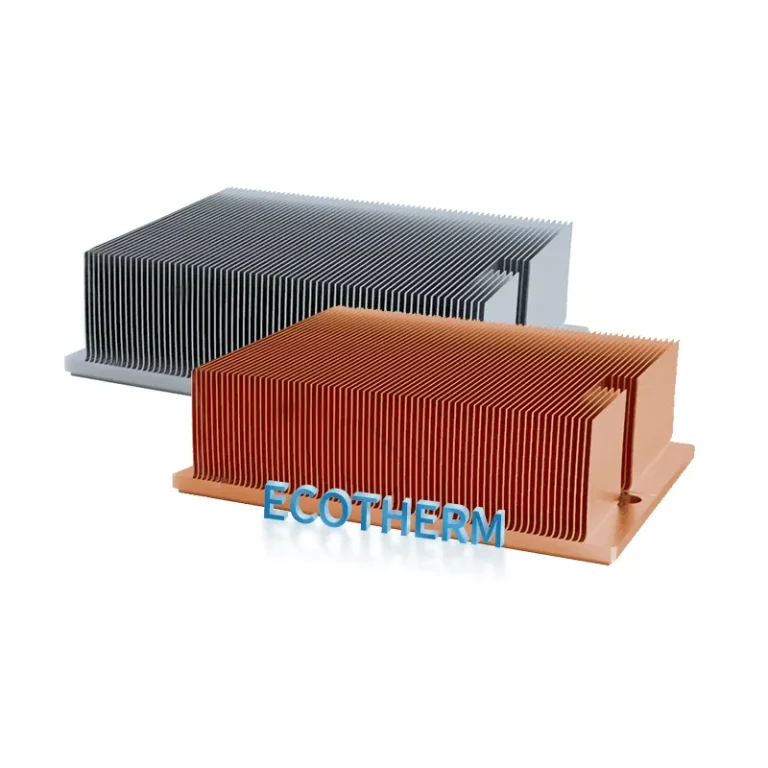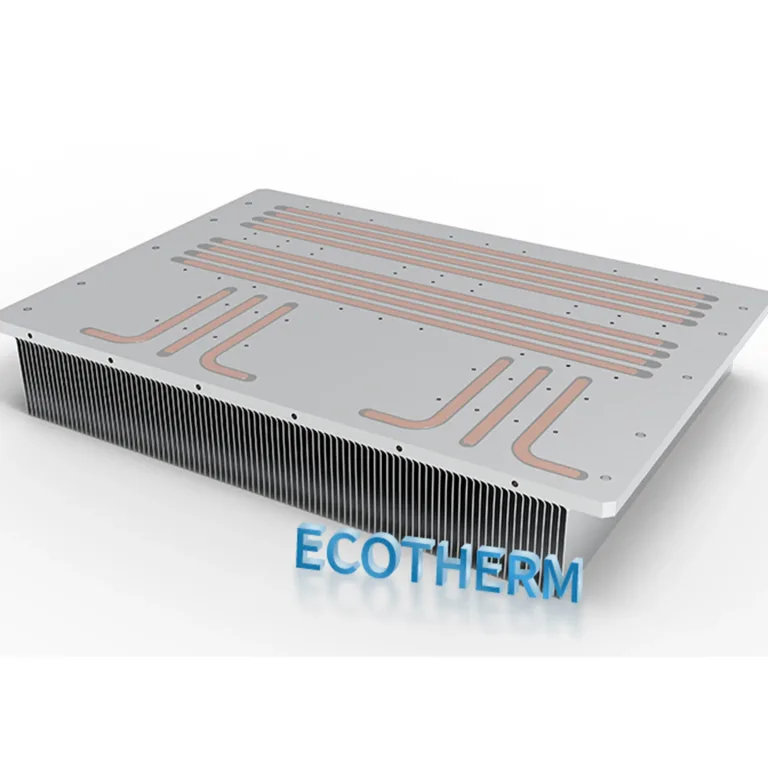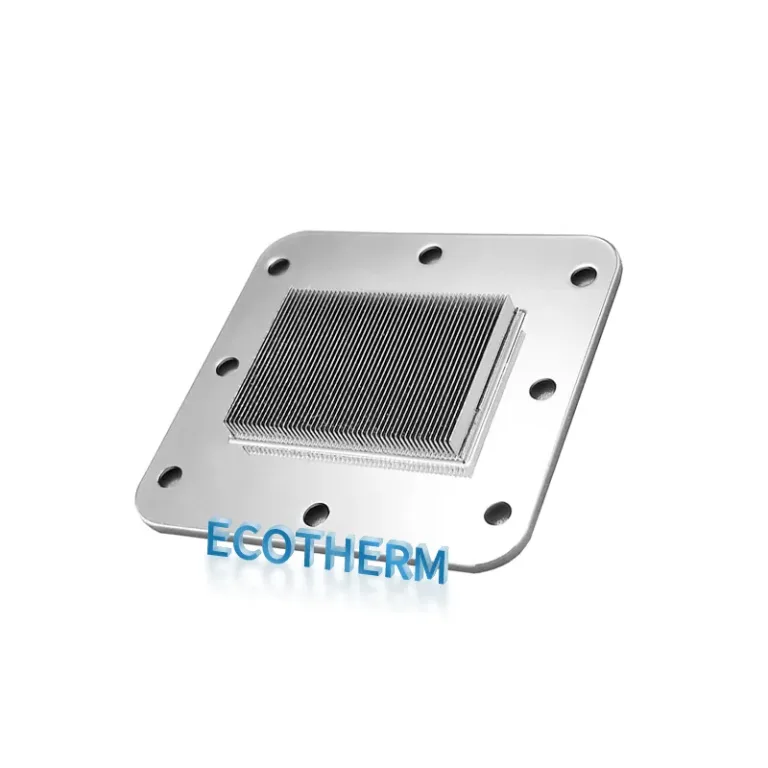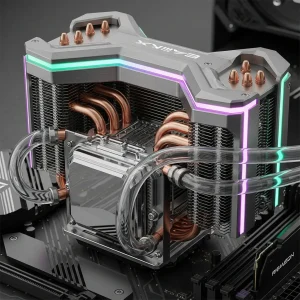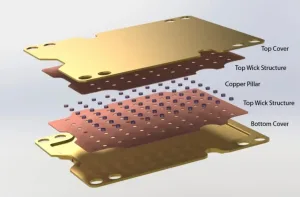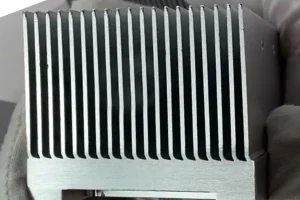Complete Guide to Skived Heatsinks
Introduction:
Skived heatsinks, as one of the most efficient thermal management solutions, have become the preferred choice in many high-performance applications due to their unique manufacturing process and excellent heat conduction capabilities.
This article will provide a deep dive into the fundamentals of skived heatsinks, including their manufacturing process, materials, applications, and how to select the right skived heatsink for specific needs.
Whether you’re an engineer, a purchasing professional, or someone interested in thermal technologies, this guide will offer comprehensive and practical insights. From material selection to surface treatment, from heatpipe integration to custom solutions, this guide will cover all aspects of skived heatsinks, showing you how this technology can provide efficient heat dissipation and enhance device performance across various fields.
1. Introduction to Skived Heatsinks
What Is a Skived Heatsink?
A skived heatsink is made by using a specialized skiving machine to slice fins of a specific thickness and height from a solid block of aluminum or copper.
Due to the high precision cutting technique and integrated formation, skived heatsinks offer a larger surface area for heat dissipation than other manufacturing processes using the same amount of material.
This results in more stable thermal conductivity and can improve thermal efficiency by 15-30% compared to bonded-fin heatsinks, significantly enhancing cooling performance and extending the lifespan of heat-generating components.
How Skived Heatsinks Work?
Skived heatsinks are produced by a machine that uses specialized tools (called skiving knives) to slice thin fins from a block of aluminum or copper.
These fins are integrated with the base, eliminating interface thermal resistance issues.
The design maximizes surface contact with air, enhancing heat transfer from the device. Typically made from high-conductivity materials like aluminum or copper, heat is conducted through the material to the fins and then carried away by air movement.
Often designed in combination with heatpipes or liquid cooling systems, skived heatsinks offer superior thermal management.
Comparison with Other Heatsink Technologies (Extruded, Die-Cast, Bonded-Fin)
Extruded Heatsinks: Formed by extruding metal materials, suitable for most standard applications, but less efficient under high heat loads.
Die-Cast Heatsinks: Formed by casting molten metal into molds, ideal for high-volume production, and used for most general applications.
Bonded-Fin Heatsinks: Made by welding individual fins to the base, offering high thermal conductivity but more complex in structure.
2. Core Materials and Thermal Performance
Common Materials: Aluminum and Copper
Aluminum: Aluminum heatsinks are widely used for their light weight and good thermal conductivity, with a thermal conductivity of about 205 W/m·K, making them ideal for most consumer electronic products.
Copper: Copper offers better thermal conductivity than aluminum (385 W/m·K), but it is heavier and more expensive. It is typically used in applications requiring very high heat dissipation, such as high-power LEDs and processors.
Thermal Conductivity Comparison
Aluminum (Al): 205 W/m·K
Copper (Cu): 385 W/m·K
Impact of Material Choice on Overall Thermal Efficiency
Material selection directly affects thermal efficiency. Copper’s superior conductivity makes it ideal for high-performance applications, but its higher weight and cost make aluminum a more balanced option for most commercial products. For ultra-high-power devices, copper is often used as the base material, with aluminum fins incorporated for optimal design.
3. Skiving Manufacturing Process
Overview of the Skiving Process
Large Skived Fins and Internal Skived Fins
Large Skived Heatsinks: Typically used in applications with high thermal load demands, such as servers and high-performance computing devices.
Internal Skived Heatsinks: Compactly designed, ideal for devices with space constraints, such as laptops and LED lighting.
Precision and Consistency in Skiving
The manufacturing precision of skived heatsinks is extremely high, usually achieved with CNC machines to ensure micron-level consistency in fin thickness, width, and depth. This precision ensures uniform heat transfer and effective heat dissipation.
4. Integration with Heatpipes and Liquid Cooling
Thermal Design with Skived Heatsink and Heatpipes
Integrating heatpipes with skived heatsinks significantly enhances thermal conductivity. Heatpipes use an evaporation and condensation cycle to transfer heat from the source, which is then rapidly dissipated through the high surface area of the skived heatsink. This combination performs exceptionally well in high-power applications like CPU and GPU cooling.
Skiving Applications in Liquid Cooling Cold Plates
Skived heatsinks are often combined with cold plates in liquid cooling systems to provide even more efficient heat dissipation. In liquid cooling, the skived heatsink contacts the coolant, removing heat which is further dissipated by the flowing water. This technique is widely used in high-performance computers and advanced servers.
Cost, Performance, and Longevity Comparison
While integrating skived heatsinks with heatpipes or liquid cooling systems may incur higher upfront costs, the long-term performance and improved thermal efficiency help reduce system overheating issues, prolonging device lifespan.
5. Fabrication Details and Surface Finishing
Common Finishing Methods: Anodizing, Nickel Plating, etc.
Anodizing: An electrochemical process that converts the aluminum surface into a hard oxide layer, improving corrosion and wear resistance.
Nickel Plating: Used to enhance aluminum’s corrosion resistance, making it ideal for moist environments.
How Surface Finishing Affects Heat Transfer and Corrosion Resistance
Surface treatments not only affect the aesthetics but also improve heat dissipation and durability. Anodizing increases surface porosity, further improving thermal performance, while nickel plating enhances corrosion resistance, making the heatsink more durable in harsh environments.
Custom Machining Options
Custom machining options can design heatsink structures and surface finishes tailored to meet the specific thermal and aesthetic needs of different devices.
6. Typical Applications of Skived Heatsinks
7. How to Select the Right Skived Heatsink
Ecotherm has 22 years of experience in customizing radiators. They offer free drawing assessment, free drawing production, free radiator design, and free thermal simulation. If you are interested, please contact us and send us your drawings!
Website:ecothermgroup.com
Alibaba:sunwaytech.en.alibaba.com
TikTok:@ecothermgroup
Email:support@ecothermgroup.com

